Nara, Japan – Saturday, June 18th, 2011
I got back to my hostel after a day at Parque España-Shima Spain Village and after a quick dinner made my way to the common area to talk with some of the other travelers. This cool middle-aged guy, a chef from Hawaii as I recall, was here in Japan to finally discover and understand his Japanese heritage. A good of a reason to travel if there ever was one, one that I hoped to relate to given my visit to Italy the previous year had a similar sense of purpose. Having little connection or understanding of Asian culture before this trip, this current journey was less about self-discovery and had turned to a more general sense of witnessing the diversity of the world, particularly through the prism of amusement and theme park design I was dedicated to. As we shared travel stories, I couldn’t help but feel a little proud and excited as I related my tales from the past weeks and months across Hong Kong, Singapore, China, Taiwan, Korea, and finally Japan.
I finished my story, and the chef offered his emphatic response: “Wow! So, you’re probably living the best time of your life right now!”
Wham. Those remaining ten days, just a moment before seeming so vast, suddenly caught right up to me. I was so focused on living in the present moment, taking each day as a new adventure, that I hardly had time to think about what came after my flight home. After half a year in Europe in 2010 followed by another half in Asia in 2011, the end of my journeys was in sight. What was obvious to him and anyone else was something that I had yet to reckon with for myself: what came after? In the near term I had barely given thought to my plans once I got back. In the medium term, I could be sure that with graduation upon me and student loans coming due, It’d be a while before I could do anything like this again. And in the long term, when I perhaps finally had a stable employment and the financial freedom to undertake another ambitious project… well, surely there’s still opportunity to be had there! But what were the odds that, either I’d never get to have an experience quite like this again, or even if I did it wouldn’t mean the same thing at a later age once the contours of my life and future had set in shape and that feeling of possibility was no longer there. It was too much to contemplate in the moment, so I changed the topic.
The next morning had rain in the forecast. Today I had originally set aside to see a smaller Osaka-area park such as Hirakata Park, as well as some of the city itself. Between the rain and discovering that Hirakata admission was more than the equivalent of $50 USD, I decided to just focus on the city. (Japan is expensive, for both amusement parks small and large and nearly everything else. One side-effect of visiting after the tsunami was that the exchange rate for Yen was highest it had ever been in recent history.)
Over a simple breakfast and coffee, I asked the host of the hostel if she had any recommendations for good indoor activities, like museums, that I could see to better understand and experience the city of Osaka, while avoiding the rain. After a few questions about what else I had planned, she then decided to offer the perfect recommendation for me: I should take the JR train out of Osaka to the historic city of Nara, which has numerous temples and charming streets to explore, mostly outdoors. Apparently, apart from Universal Studios, there’s nothing good in Osaka!
While at first I was resistant to a plan that seemingly went against every single criterion I had wanted to set for the day, the host seemed quite sure that I would not find a better use of my time today than to visit Nara, even considering the forecast. Okay, I’ll try it! I grabbed my jacket and headed off to the neighborhood station to catch the next train to Nara, which I was happy to find offered a direct route multiple times per hour.
I soon arrived in Nara. The ground was wet but it wasn’t actively raining. English signs pointed my way to the nearby parks and cultural landmarks. This trip might work!
Even though it was a Saturday it seemed as if most of the visitors were students in their school uniforms. Weekend field trips?
I recall being briefly told about the deer of Nara, and soon I saw a single antlered deer standing near a park fence. “Wow, incredible,” I thought to myself as I snapped a picture of this animal from behind a tree, careful not to disturb it.
But then I noticed a crowd formed nearby inside the Nara Deer Park. Going to investigate, I found dozens of more deer, freely roaming right up to all the people.
This was very different behavior than the deer I was familiar with back in Michigan. Nara’s deer have been given numerous protections and freedoms to roam the city and expect food from locals and tourists, to the effect of partly domesticating them. Throughout the day I continually was surprised by how thoroughly integrated the deer were to Nara city life. First it was, “wow, there’s a deer,” then “wow, there’s lots of deer,” then “wow, they go right up to humans,” and then “wow, they can wander in the streets around the park,” until finally I realized: yup, no surprise, there are literally hundreds of docile deer roaming everywhere in Nara.
While the deer are fairly docile, seeing a multiple large wild animals with big antlers approach you for the intent of food can still be a bit intimidating. They sell deer food to feed, but turning yourself into a target for the deer seems unwise given that there’s usually dozens nearby at any time, ready to swarm you.
Many of the deer congregate in the Nara Deer Park, but they’re seen all throughout Nara and its many cultural sites. It’s charming yet surreal, like walking into a scene from a Studio Ghibli movie. Having visited lots of cities in Asia, it’s easy to miss their distinctive character at street level, but Nara immediately struck me with its unique rhythms within minutes of stepping off the train. I never experienced anything quite like it within Asia.
A simple map and guidebook I had helped me to navigate Nara and see its many cultural landmarks, as the entire city is designated a UNESCO World Heritage Site. First up was the Kofukuji Temple, otherwise known as the Five-Story Pagoda, the second tallest pagoda in Japan. It was originally built in 730, although the current pagoda is a restored version from 1426.
Nara was the first permanent capital of Japan. Unlike the larger nearby historic capital city of Kyoto, Nara retains a very friendly, small-town demeanor that makes it easy to approach for a largely unplanned day trip.
One of the top sites I was told about in Nara (apart from the deer) was the Todai-ji temple complex, accessed through this Great South Gate, the largest temple entrance in Japan.
From the gate there’s a short pathway through the temple complex to its main attraction, the Great Buddha Hall.
The Great Buddha Hall certainly makes a strong first impression from the outside, as once the world’s largest wooden building until recent decades.
But the real reason for its popularity (and the size of the building) is found inside.
This temple is home to the world’s largest indoor bronze Buddha, standing 15 meters (almost 50 feet tall).
Aside from the Great Buddha, there are many other devotional sculptures and artifacts throughout the temple, many also very impressively scaled, if not for the comparison to the immense bronze Buddha nearby to dwarf them all.
One of the more curious elements was the so-called “Buddha’s Nostril,” basically a hole in one of the wooden pillars that, if you crawl through, will earn you enlightenment. There were enough enlightenment-seekers to form a small queue.
The Binzuru, a rather creepy wooden statue that, if you rub one of its body parts then rub your same body part, will cure your ailments.
The temple was also selling eternal happiness for the low, low price of 1,000 yen (~$10USD)! Buddhism definitely offers some of the best bang-for-your-buck of any religion.
One last look at the Great Buddha on the way back out.
From the Great Buddha Temple, I continued to further explore the Todai-ji complex.




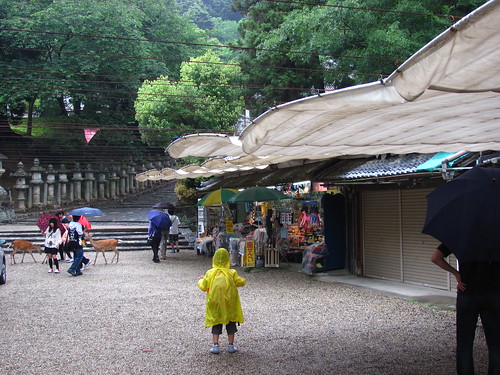


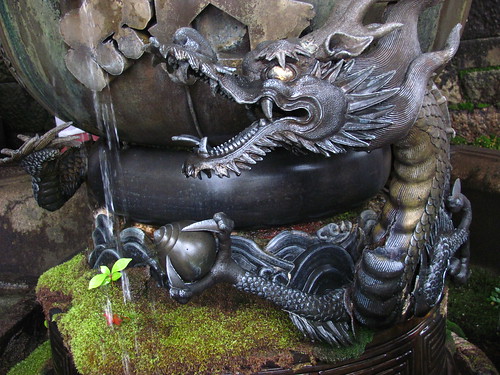 The Nigatsu-do Hall is located on a hillside overlooking the temple complex, offering some good views.
The Nigatsu-do Hall is located on a hillside overlooking the temple complex, offering some good views.





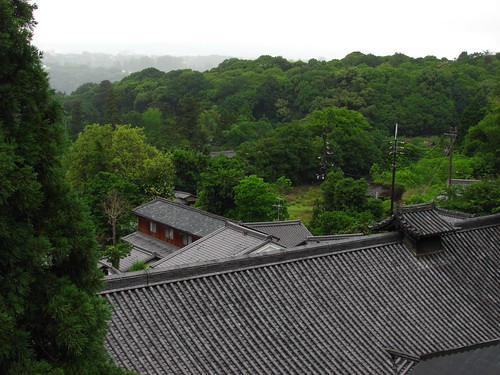

 Following my map and guidebook, I took a long stroll away from the main tourist corridors down some of the quiet streets and bucolic trails of Nara. Yes, of course there were more deer along the route.
Following my map and guidebook, I took a long stroll away from the main tourist corridors down some of the quiet streets and bucolic trails of Nara. Yes, of course there were more deer along the route.
Somewhere not too far away from here was the site of the former Nara Dreamland theme park, famous among theme park fans for being one of the most elaborate Disneyland imitations ever built, including a Matterhorn knock-off (with cable gondolas through the mountain!), although coaster fans mostly knew it as the location of Aska, an Intamin wooden coaster patterned after the Coney Island Cyclone that had made the top ten list in Mitch Hawker’s Coaster Polls even after the park closed in 2006. While it might have been fun to explore the abandoned amusement park (which is now mostly demolished), the park had long since been stricken from directions on the tourist maps, and I needed to keep moving before the weather changed. However, as I was looking through the photos from Nigatsu-do Hall, I realized that the lift hill of Aska and mountain of Bobsleigh were actually barely visible through the fog in one of my photos above, something I never realized during my visit. (You may need to zoom to spot them.) An unexpected “coaster visual credit” for myself nearly 10 years after the fact!
I eventually came across a pair of Kofun, large ancient burial mounds that appear like an island in a lake. The history behind their creation is impressive, although there’s not much to witness for visitors.
The waterside was picturesque, and numerous turtles and carp swam up to me as I passed. Apparently like the deer they also associate humans with food?
Finally, the Heijo Palace Historic Park is a large open area with archeologic sites on the location of Nara’s former palaces, dating back to the city’s time as Japan’s first capital about 1,300 years ago. By this time in the afternoon the rain was starting to come down in drizzles before eventually opening up.
A restored gate was conspicuous above the flat, open landscape. The rain started to pour as I was waiting for a train to pass by so I could reach some shelter.
Under the gate, I waited out the rain for a short while before making my next moves.
Rather than further explore the complex and risk getting caught in another downpour, I decided it was time to find something to eat. My guide only had a couple of restaurant recommendations, but one of which was nearby the Heijo Palace Historic Park and served Okonomiyaki, a type of Japanese pancake pizza. I was just about the only customer when I walked in.
The restaurant (I don’t have the name any longer) was traditional in style, in which you’d take your shoes off and sit on a pillow on the floor with a small recess under the table for your feet. (Good thing I could sort of hide my feet, as I was wearing one of my last pairs of ratty, well-overused socks beaten by miles upon miles of walking around Asia the past several months.) The table itself served as a large grill, upon which they’d pour the Okonomiyaki batter and add the sauce and toppings to cook the dish in front of you.
After a full day of walking followed by getting caught out in the rain, sitting inside this large quiet restaurant enjoying a savory hot meal was the best conclusion I could have asked for. I was even able to test some of my limited Japanese skills to thank the staff in a more elaborate way than simply “arigato gozaimasu,” which they both understood and appreciated. Was it worth those countless hours of toil for a class I was bound to fail anyway? Not really, but it made the effort just a little bit more worth it.
Overall, the day was remarkably successful for how ad-hoc it was. I wouldn’t have been able to replicate that exact experience if I were to return to Nara today, as vastly better international cellular data plans than I had in 2011 means I wouldn’t be left to figure out the city on my own based on a simple guide map (not to mention my own lessons I’ve learned for effective travel planning). But given my rather spontaneous approach to travel during this trip, Nara was perhaps the city I most enjoyed the most in Japan as it was easily the most “human-scaled” city I’d visit. Listening to my host’s advice to visit Nara despite the forecast of rain was among the luckiest incidents of my time in Japan.

































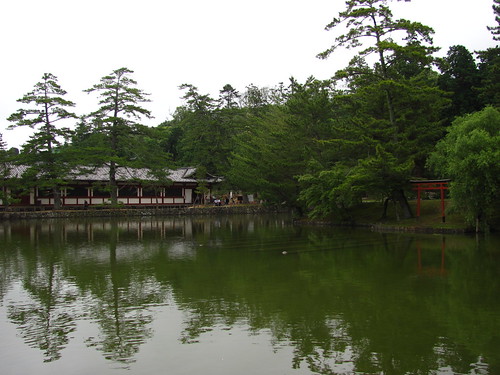
































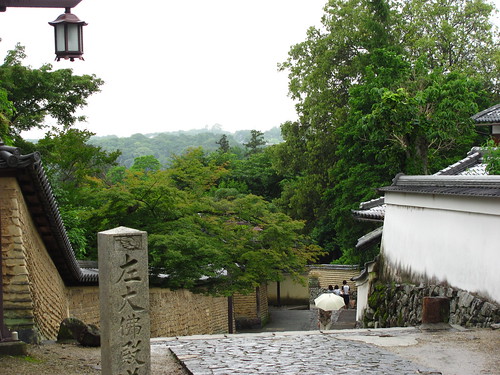


























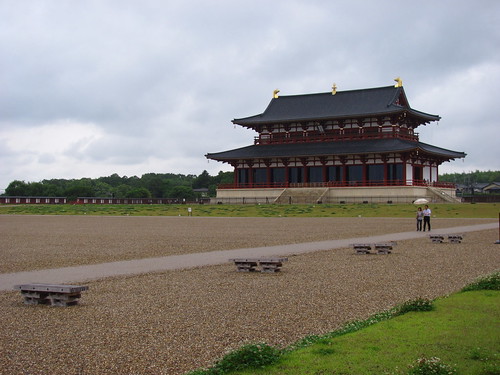


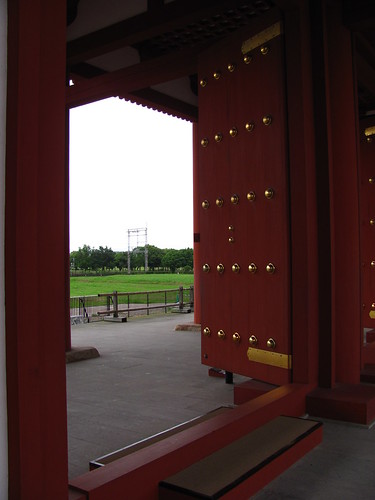


Comments